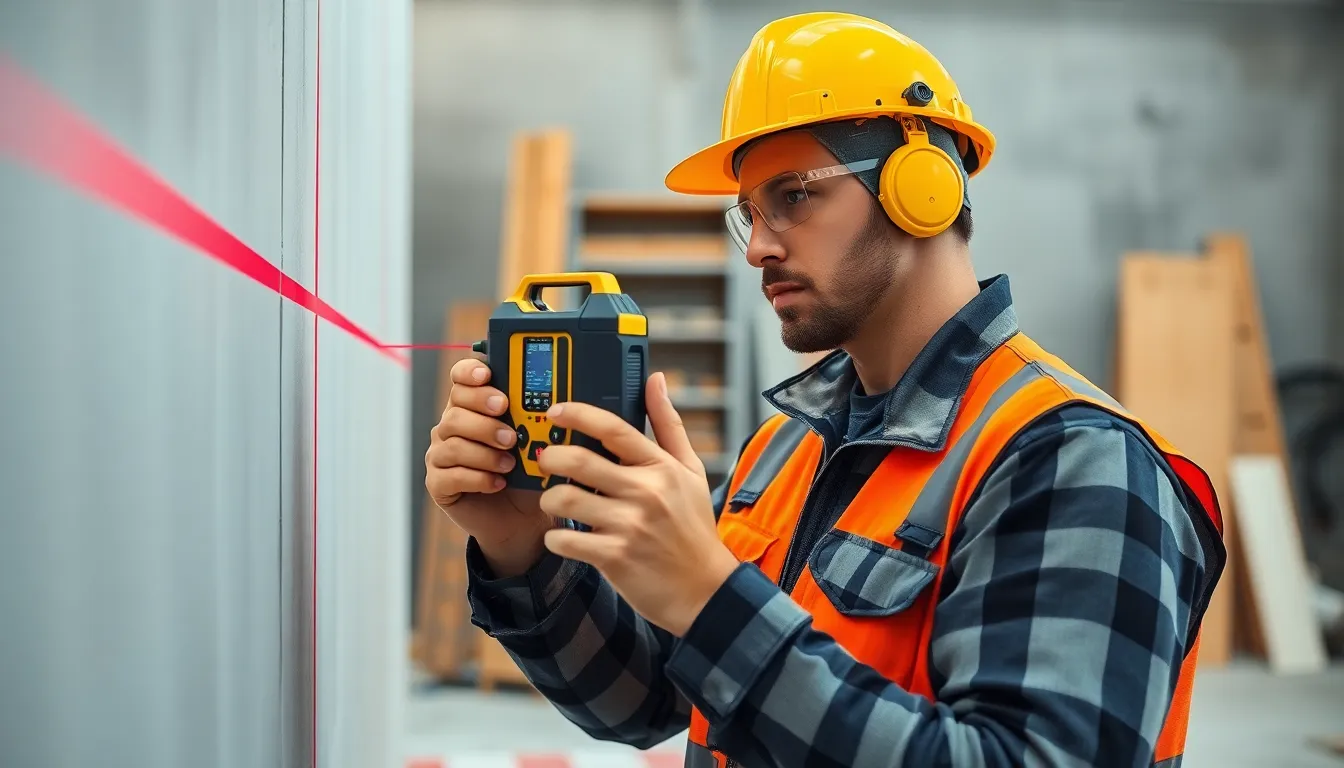Table of Contents
ToggleIn a world where precision is king, digital measuring tools are the knights in shining armor. Gone are the days of squinting at tape measures and guessing dimensions like it’s a game of darts. These high-tech gadgets not only save time but also ensure accuracy that’ll make even the most meticulous perfectionist nod in approval.
Imagine measuring a room with just a swipe of your finger or calculating angles faster than you can say “geometry.” Whether you’re a DIY enthusiast or a seasoned pro, digital measuring tools are here to elevate your game and maybe even make you the envy of your friends. So grab your favorite tool and get ready to measure up—because who said precision can’t come with a side of fun?
Overview of Digital Measuring Tools
Digital measuring tools offer significant advantages over traditional measuring instruments. They provide accurate measurements quickly and effortlessly, making the process smoother for her and him alike. Various types serve different purposes within the market, catering to DIY enthusiasts and professionals.
Laser distance measurers excel in providing quick linear measurements up to significant distances, often exceeding 100 meters. Such tools utilize laser technology to determine distances precisely, offering measurements displayed on digital screens for easy reading. These devices often include features like area and volume calculations, enhancing versatility.
Digital calipers deliver high precision for measuring smaller objects. Users often rely on these tools for measurements requiring exacting standards in settings like engineering and jewelry design. Its ability to switch between metric and imperial units adds to its practical appeal.
Digital levels incorporate electronic sensors to provide accurate horizontal and vertical readings. Many features inclinometers that display angles, while some advanced models connect to smartphones for data storage and analysis. Such tools enhance project accuracy, ensuring buildings and structures remain level.
Smartphone apps also serve as digital measuring tools, utilizing built-in cameras and augmented reality. Users can measure distances and areas using their devices, making it convenient for quick assessments. Accuracy may vary depending on lighting and perspective, so reliability becomes an essential factor.
Overall, digital measuring tools stand as essential gadgets in modern measurement practices, combining simplicity, precision, and advanced capabilities for optimal performance. Embracing such innovations leads to greater efficiency in various projects, enhancing the overall user experience.
Types of Digital Measuring Tools

Digital measuring tools encompass various instruments designed for accuracy and efficiency in measurement tasks. Understanding the distinct types can enhance selection based on specific needs.
Laser Distance Measures
Laser distance measures use laser technology to provide quick, accurate linear measurements, typically up to 300 feet. Users easily point the device at a target, and it emits a laser beam that calculates the distance based on the time taken for the reflection. They come equipped with features like area and volume calculations, making them ideal for tasks such as estimating square footage in renovation projects. Compact and user-friendly, these devices suit both professionals and home improvement enthusiasts.
Digital Calipers
Digital calipers deliver high precision when measuring small objects, with accuracy levels often down to 0.01 mm. The display makes reading measurements simpler, reducing the chance of human error. Users can switch between different measurement units, including inches and millimeters, thanks to built-in conversion features. These tools also often include a depth gauge and internal/external jaws, expanding their utility for various tasks in engineering, woodworking, and metalworking projects.
Electronic Tape Measures
Electronic tape measures combine traditional tape measure functionality with digital features, offering quick distance readings. Users pull the tape out as usual and press a button to record measurements electronically. Many models store multiple measurements, making it easier to keep track during large projects. This innovation helps eliminate the guesswork often associated with manual readings, delivering accuracy with minimal effort. Their portability and ease of use make them great for outdoor and indoor tasks alike.
Benefits of Using Digital Measuring Tools
Digital measuring tools offer significant advantages in various applications. Their design enhances efficiency and accuracy, making them a valuable addition to any measuring task.
Accuracy and Precision
Accuracy defines the core strength of digital measuring tools. Laser distance measurers achieve precise readings across long distances, ensuring reliable results every time. Digital calipers excel in measuring small objects with high precision, providing exact dimensions that traditional tools may miss. Electronic tape measures often calibrate automatically, reducing human error and enhancing consistency. Users benefit from easy-to-read displays that eliminate ambiguity, fostering confidence in measurements. These tools often feature unit conversion options, enhancing versatility for different projects.
Time Efficiency
Digital measuring tools dramatically increase time efficiency. Laser distance measures allow rapid measurements, significantly reducing the time spent calculating distances manually. Digital calipers and electronic tape measures enable quick reading and recording of measurements, eliminating the tedious process of using traditional methods. Users often find they can complete tasks faster, freeing up time for additional projects or tasks. Moreover, many tools feature memory storage, making it simple to keep track of multiple measurements for later use. This streamlined process contributes to a more enjoyable experience overall.
Applications of Digital Measuring Tools
Digital measuring tools enhance efficiency across various industries, providing accurate measurements crucial for project success.
Construction and Renovation
In construction and renovation projects, precision determines outcomes. Laser distance measurers streamline measurement processes, allowing for distances of up to 300 feet with pinpoint accuracy. These tools assist in quick calculations of area and volume, essential for estimating materials. Additionally, digital levels ensure structures align correctly, facilitating proper installations. Accurate measurements lead to reduced material waste and time savings, making these tools indispensable for contractors and DIY enthusiasts alike.
Manufacturing and Engineering
Manufacturing and engineering sectors rely on digital measuring tools for quality control and fabrication. Digital calipers offer high precision when measuring small components, supporting tight tolerances in production. With easy-to-read displays, these tools enable quick assessments, minimizing errors. Electronic tape measures combine traditional features with digital enhancements, allowing for efficient measurements of larger objects in a manufacturing environment. Enhanced measurement capabilities aid engineers in design accuracy, ensuring products meet specifications and performance standards.
Digital measuring tools represent a significant advancement in the way measurements are taken across various fields. Their precision and efficiency make them indispensable for both professionals and DIY enthusiasts. By integrating technology into the measuring process these tools not only simplify tasks but also enhance accuracy.
As industries continue to evolve the demand for reliable and efficient measuring solutions will only grow. Embracing digital measuring tools can lead to improved project outcomes and a more enjoyable experience overall. Adopting these innovations ensures that users stay ahead in a fast-paced environment where accuracy is paramount.







